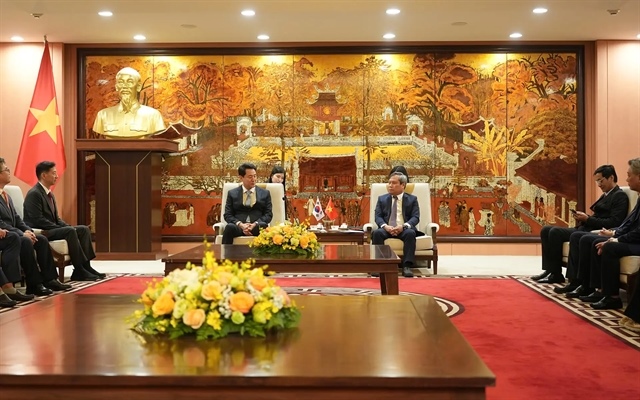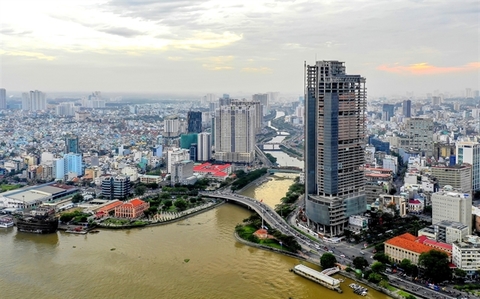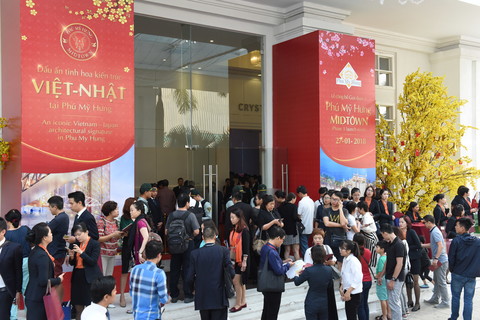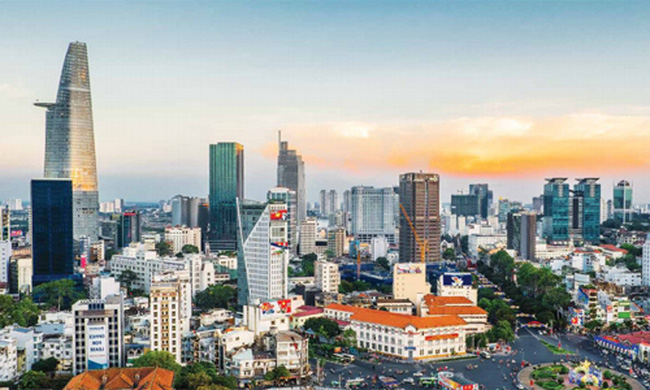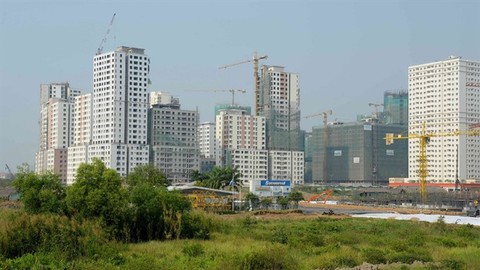Star architects draw Vietnam’s future
Star architects draw Vietnam’s future
As one of the most attractive real estate markets in the Asia Pacific region, Vietnam has recently garnered much attention from famous international architects for a variety of landmark projects.
Kengo Kuma: Waterina Suites
Kengo Kuma is regarded as one of the most famous contemporary architects in Japan. He is the designer of the 2020 Olympic Stadium in Tokyo and over 100 architectural works across many countries. Kengo Kuma is also a professor at the Graduate School of Architecture at the University of Tokyo.
His designs are inspired by nature. In contrast to the fashion amongst modern designers of immense buildings constructed from reinforced concrete, Kuma’s design style is imbued with natural beauty, sophistication, imagination, and a unity between people and their surroundings. The philosophy of harmony, or “the need for bridges”, is evident in each project and he is also one of the few architects who keeps his identity intact across his work.
Kengo Kuma told VIR that when constructing a design in Vietnam, he tries to create a space which is not merely a functional living space, but that holds itself as a piece of art too.
Waterina Suites is his first project in Vietnam. “Before designing any project, my colleagues and I thoroughly study the surrounding space and defining characteristics of local terrain to draw on its harmony. We have carefully surveyed the landscape of Vietnam and were impressed by the curves of the terraced fields in the north-west. Therefore, Waterina Suites was designed as a river city, with water bubbling around the suburbs,” Kuma said.
Water has become the key element of inspiration for Kuma’s first Vietnamese piece, which overspills into the project’s title. “Smooth waves around the exterior of the building are the hallmark of the design, creating the effect of a sparkling water flower in the, now suffocating, urban landscape. These curves are architectural highlights, creating harmonious feng shui for air and wind, as well as bringing natural compounds into the life of each family living there,” he said.
Tetsuo Kida, CEO of Waterina Suites investor Maeda-ThienDuc, said that the company was thoroughly convinced by Kengo Kuma’s first draft. “At Waterina Suites, art is guaranteed by the aesthetical eye of Kengo Kuma.”
“Vietnam is a market with resounding potential for the future of Southeast Asia and even the greater continent, and we hope to be able to establish good relations here,” said Kuma.
Born in 1954 and graduating from the University of Tokyo in 1979, Kengo Kuma worked in Japan before progressing to further study in 1986 at Columbia University. Returning to Japan in 1987, he founded the Spatial Design Studio, and later Kengo Kuma and Associates. To date, the architecture firm has over 150 architects working with him, with offices in Tokyo and Paris and a stunning portfolio of international works.
Ole Scheeren: Empire City
German architect Ole Scheeren is the man behind a series of unique architectural works in Asia with his firm, Büro Ole Scheeren (BOS).
Inspired by the intricacies of urban life, works by Scheeren link people, concepts, and cities together into stories; stories which are thus translated and transformed into his distinct design style.
“Architecture is imagined as a matrix of hybrid narratives from which to construct future realities,” said Scheeren.
Scheeren adopts the practice of applying innovative thinking to create designs that go beyond the boundaries of traditional architecture. He is also an architect who dares to engage in ground-breaking fields to create works which are both functional and economic, but that also reflect the cultural or spiritual values of the site’s surrounding community.
The issue of ‘functional design’ has become a topical concern in modern architecture. According to Scheeren, there are “damaging chains of thought” that bind the architect to practical functions, without giving him freedom to illuminate the design beyond this.
“Of course, architecture has to be useful, but I want to emphasise a completely different value, which is that every building has its own story of the subjects that are living and working there – and as the architect, we must find a particular approach to each project,” he argued.
Thus, besides the main functional aspects of a project’s requirements, the architecture of Scheeren and his colleagues introduces new innovative aspects that perfectly blend material reality and imaginative ideas.
“As architects, we have to be optimistic and believe in the opportunity to improve our lives through the very designs we create. It is our job to focus on practicality and a clear understanding of the real needs, but not forgetting the real challenge, maintaining the momentum to find new opportunities and approaches,” he said.
Scheeren considers the people living and working inside the building to be part of the structure’s material elements, along with the glass, tile, or cement. As such, architecture must look to blend these elements together, instead of separating them in a constructive manner as with the phenomena of mainstream skyscrapers.
Being the architect of a range of landmark buildings across the world – such as the 77-storey tower MahaNakhon in Bangkok, or the Duo Tower and Interlace in Singapore – Scheeren has recently put his name to Empire City, the landmark development in Ho Chi Minh City’s Thu Thiem New Urban Area.
Developed by a multinational joint venture of prominent names in real estate development across Vietnam, Singapore, and Hong Kong – including Gaw Capital Partners, Keppel Land Ltd., Tien Phuoc Real Estate JSC, and Tran Thai Lands Co., Ltd – Empire City will contain the highest building in Vietnam when it is put into operation in 2020, the 86-storey Empire City Tower.
Designed by BOS, Empire City will be made up of three towers, which will rise up from a domed podium that mimics the topography of Vietnam’s natural mountainous landscape. The podium will feature terraced gardens that are reminiscent of Vietnam’s tiered paddy fields, while the tallest of the towers will swell out near the top to create an elevated garden, or “sky forest”.
Scheeren said that there is an incredible energy in Ho Chi Minh City and that he expects the city to transform in the next few years. “It really reminds me of Bangkok many years ago. If you look at how much construction is taking place, it’s one of those moments where one could think it’s unimaginable.





